With years of experience, benefiting from the presence of professional colleagues and setting up various and numerous laboratories, you can trust us to have a modern, safe and standard laboratory:
Laboratory equipment and scaffolding are designed with the aim of preparing a suitable space as a work table and for placing devices, glassware, supplies and laboratory equipment, and the set of cabinets that exist in every laboratory is called laboratory scaffolding or benching (laboratory benching). will be
The first step in setting up a laboratory is the proper design and implementation of the laboratory scaffolding in a principled and correct manner. Safety and observance of technical principles in the implementation of scaffolding and laboratory cabinets are of great importance, but at the same time, the design and creation of an elegant and calm environment for research should not be ignored.
The design and construction of durable and well-made platforms will make the laboratory space more favorable for laboratory staff and technicians.
Platform components and laboratory cabinets
In general, laboratory scaffolding consists of three main parts: skeleton (frame), top plate and cabinet (unit) and includes the following equipment:
- Laboratory platform
- Weighing table
- Laboratory sinks and faucets
- Material storage cabinets
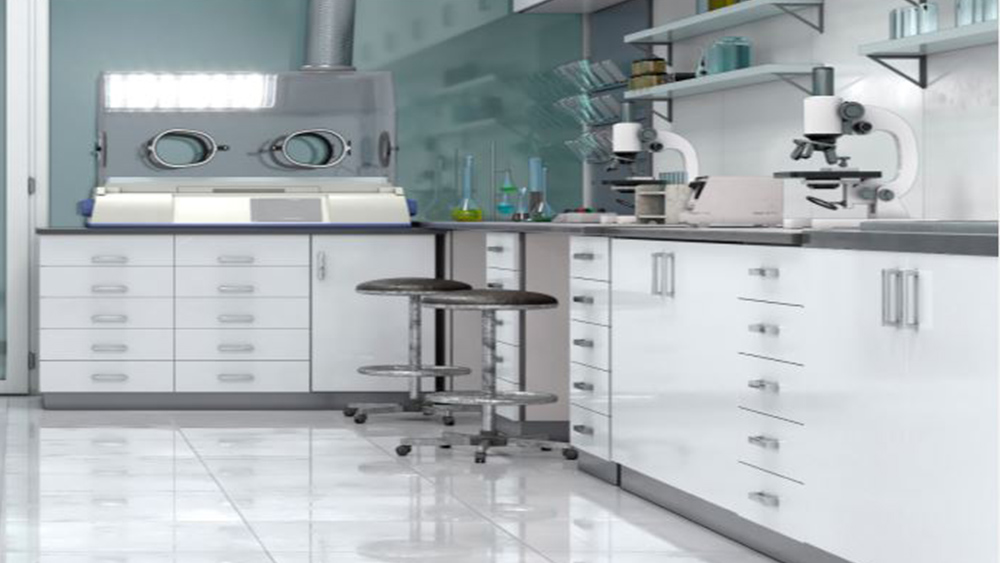
Scaffolding tests
Types of Laboratory Scaffolding
Two-way platform (island)
A double-sided laboratory platform (double-sided table) or laboratory island is another type of laboratory cabinet that, by installing in the middle of the laboratory environment, provides the possibility of using both sides for employees.
This model of scaffolding is also based on the laboratory scaffolding standard and often has a height of 85 to 90 cm and a width of 120 to 160 cm.
Also, this laboratory scaffolding, while having the ability to install a sink, all kinds of laboratory faucets, electrical sockets, etc., creates the possibility of using laboratory equipment and sinks bilaterally for users, and usually has a top plate made of granite stone, epoxy resin, steel, HPL (Formica) and ceramic are anti-acid. The material of the top plate of the platform is one of the important factors determining the price of the laboratory platform.
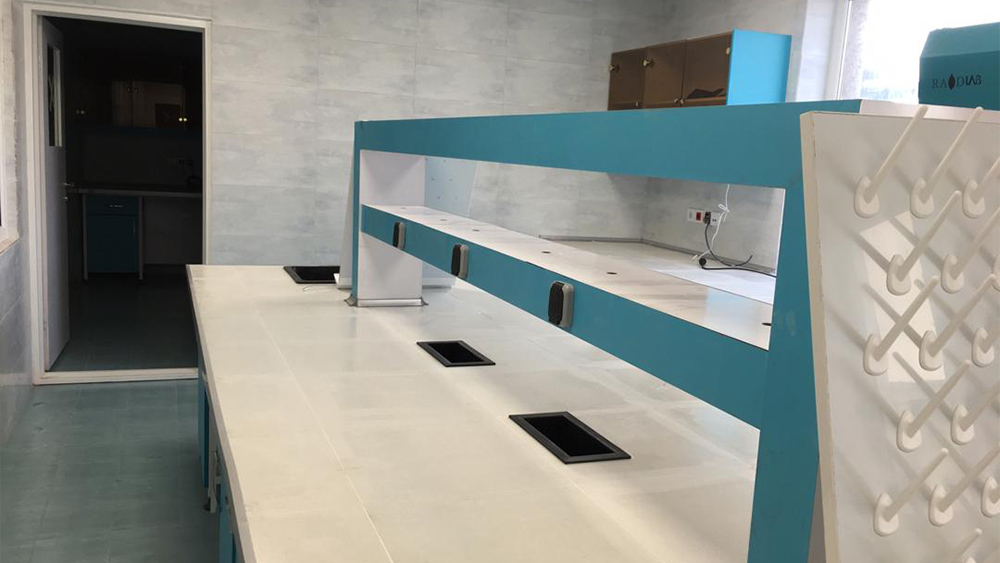
Examples of scaffolding services
Specifications of Laboratory Scaffolding
- The possibility of designing in dimensions and sizes according to the laboratory standard
- The possibility of designing in different colors
- The possibility of arranging according to the preferences of users
- Having sufficient resistance against physical agents and chemicals
- Pollution control and disposal
- Having proper safety during work
- Ability to reinstall in other environments
- Possibility of easy installation
- Access to other facilities
- The possibility of installing equipment
Depending on the type of laboratory and the activities carried out in that center, different raw materials and procedures are applicable. It is possible to install accessories such as sinks and cup sinks, various table faucets, under shelves and over shelves, eye washers and electrical installations on the laboratory platforms.
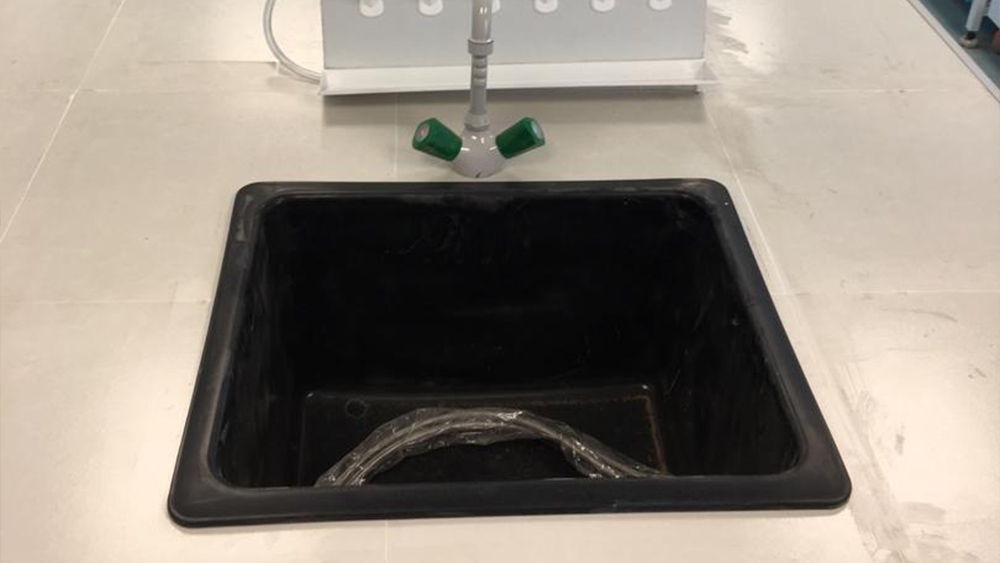
The middle table of the laboratory
Dimensions of the two-sided laboratory table:
The middle laboratory table is made in two heights of 75 cm and 90 cm. The two-sided laboratory table with a height of 75 cm is for laboratory design using laboratory equipment or laboratory expert tables. Tables with a height of 90 cm will be suitable for building a laboratory with the use of the laboratory user and in places where the laboratory technician works standing.
The two-sided laboratory table is made in fixed laboratory equipment with different widths from 120 cm to 160 cm.
Laboratory center table top:
The most essential part of a laboratory middle table is its top, which is exposed to the risk of contact with laboratory chemicals, including acids, bases, dyes and laboratory solvents. Various types of procedures including ceramics, granite, laboratory ceramics, steel or HPL are used in paving the laboratory. Steel surfaces are mostly used in microbial laboratories, and different ranges of 316 acid-resistant steel or non-acid-resistant 304 steel are used for laboratory table tops depending on the application in the laboratory.
Another type of laboratory cabinet top is acid-resistant granite. Depending on the width of the tables, granite is suitable for laboratory paving in different widths and long lengths. In fixed laboratory equipment, granite stone is generally used for the scaffolding of chemical laboratories and in spaces where reactions and experiments are mostly done with acids and bases. The darker the granite is and the less silica it contains, the more resistant it will be to acids, bases, and laboratory solvents. The front edge of the granite stone is usually cut and polished using glossy paste for the beauty of the laboratory design.
Construction ceramics and laboratory ceramics are other types of tops in the double-sided laboratory table. Construction ceramics are more affordable in fixed laboratory equipment, but considering that most of them do not have dimensions larger than 80×80 cm, the number of seams that must be sealed reduces the quality of laboratory procedures with construction ceramics. The best and highest quality procedures in the design of a laboratory and the construction of fixed laboratory equipment are laboratory ceramics that are made for the laboratory. Laboratory ceramics are made in two classes, rimmed and rimless. The length of laboratory ceramics can be up to two meters, so the number of seams is greatly reduced.
HPL: It is made of two layers of raw MDF with HPL coating and is produced in different widths. This procedure is suitable for designing a physics laboratory. It is recommended to use HPL procedures in the device spaces where water or laboratory solvents are not used.
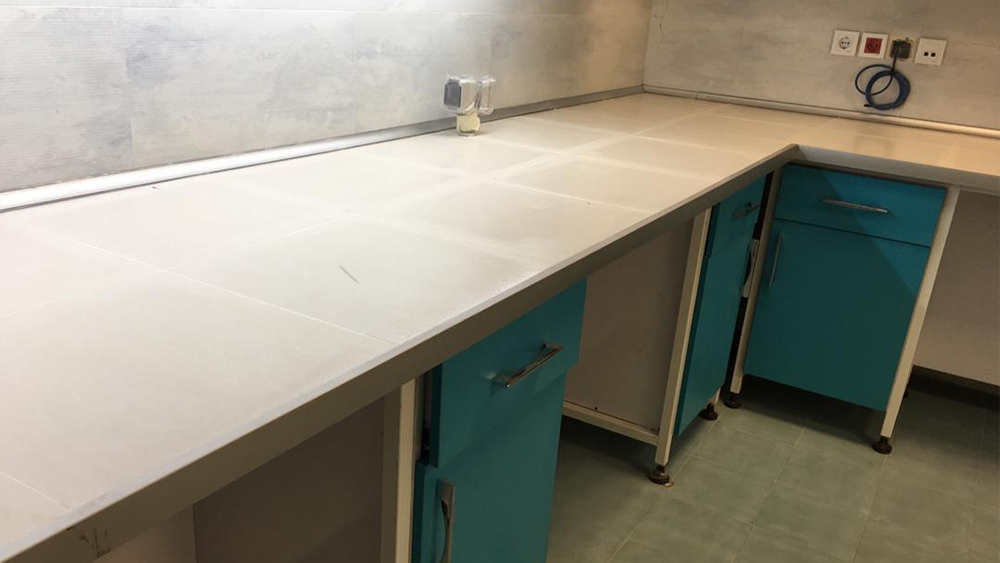
Laboratory side table
Laboratory side table
One of the most basic parts of designing laboratory scaffolding and laboratory equipment is the type of laboratory table design and construction. The table next to the laboratory is made in different sizes and specifications to be used in different laboratories or for different purposes. Depending on whether the chemical laboratory is set up or a microbiology laboratory, or depending on whether the laboratory cabinets are used in a research laboratory or an educational laboratory, the type of raw materials used and the work procedure will be different.
Description
The laboratory side table includes various parts that change in each laboratory depending on the type of use of the laboratory and the design of the laboratory cabinets. Chemical laboratory, microbial laboratories, physics laboratories, or genetic laboratories each need a specific type of laboratory design. A research laboratory, an educational laboratory or an industrial laboratory also plays a role in the design of the laboratory platform and the table next to it.
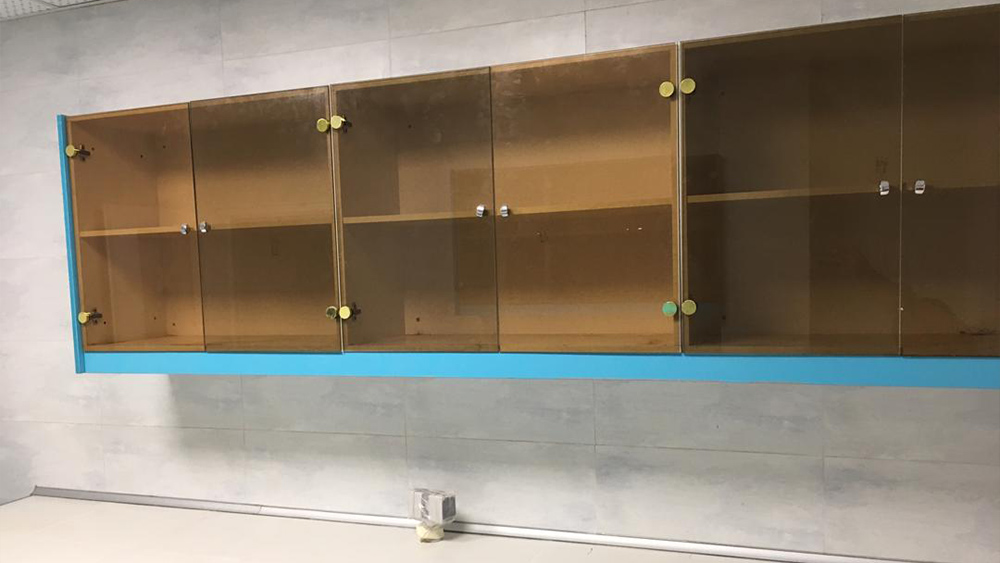
Laboratory air cabinet
tabletop
The most essential part of a laboratory table is its top, which is exposed to the risk of contact with acids, bases, dyes, and laboratory solvents. Various types of procedures including ceramics, granite, laboratory ceramics, steel, or HPL are used in paving the laboratory. Steel surfaces are mostly used in microbial laboratories, and different ranges of 316 acid-resistant steel or non-acid-resistant 304 steel are used for laboratory table tops depending on the application in the laboratory.
Another type of laboratory cabinet top is acid-resistant granite. Depending on the width of the tables, granite is 70, 75, 80, and 90 cm wide and long, suitable for laboratory scaffolding. In fixed laboratory equipment, granite stone is generally used for the scaffolding of chemical laboratories and in spaces where reactions and experiments are mostly done with acids and bases. The darker the granite is and the less silica it contains, the more resistant it will be to acids, bases, and laboratory solvents. The front edge of the granite stone is usually polished with a shiny tool for the beauty of the laboratory design.


